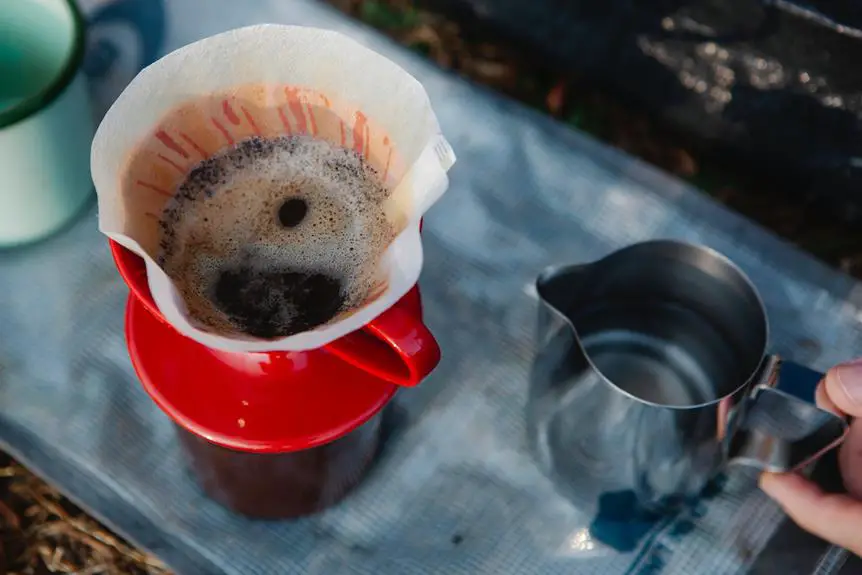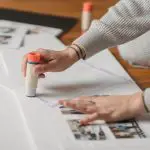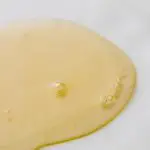Looking to bond foam fabrics with the strength of a gorilla? You're in the right place. Discover if Gorilla Glue lives up to its powerful namesake in its effectiveness on foam materials.
Understanding the intricacies of foam fabrics and the properties of Gorilla Glue will help you make an informed decision. From application tips to testing methods, you'll gain mastery over the process.
Let's delve into the compatibility of Gorilla Glue with foam and explore maintenance for a durable bond. Whether you're crafting or repairing, this guide will equip you with the knowledge to achieve reliable results.
Key Takeaways
- Foam durability and fabric flexibility should be considered when choosing an adhesive for foam fabrics.
- Gorilla Glue is effective on various types of foam, including polyurethane foam, foam rubber, and polystyrene foam.
- Gorilla Glue creates a durable and waterproof bond with foam fabrics.
- Proper surface preparation, application techniques, and testing are important for achieving a strong bond between Gorilla Glue and foam fabrics.
Understanding Foam Fabrics
When working with foam fabrics, it's essential to understand the characteristics and properties of the material before attempting any adhesive applications. Foam durability is a key factor to consider when choosing an adhesive, as certain types of foam may break down or degrade with the use of certain chemicals found in adhesives. Additionally, fabric flexibility plays a crucial role in determining the type of adhesive that will best suit the foam fabric.
Understanding how the foam will flex and move is essential to ensure that the adhesive will maintain its bond over time without cracking or breaking.
Foam durability varies depending on the type of foam used, with some foams being more susceptible to wear and tear than others. It's important to select an adhesive that complements the specific durability of the foam to ensure a long-lasting bond. Similarly, the fabric flexibility of foam fabrics can differ, requiring adhesives with the appropriate flexibility and elasticity to accommodate the foam's movement and prevent the bond from weakening.
Properties of Gorilla Glue
If you're considering using Gorilla Glue on foam fabrics, it's important to understand the properties of this adhesive. Gorilla Glue is known for its exceptional strength and versatility, making it a popular choice for various bonding needs.
Here are some key properties of Gorilla Glue that make it effective for foam fabrics:
- Versatility: Gorilla Glue is suitable for bonding a wide range of materials, including foam fabrics. Its versatility allows for effective adhesion in diverse applications.
- Waterproof: This adhesive is resistant to water once cured, providing durability and reliability, especially for foam fabrics that may be exposed to moisture.
- Expanding Formula: Gorilla Glue expands as it cures, filling in empty spaces and creating a strong bond with foam fabrics, enhancing its effectiveness in the bonding process.
- Durability: Once bonded, Gorilla Glue creates a durable connection that can withstand various conditions, ensuring a long-lasting bond with foam fabrics.
Understanding these properties of Gorilla Glue can help you assess its effectiveness for your specific foam fabric bonding needs.
Compatibility With Foam Materials
Considering using Gorilla Glue on foam fabrics? Assessing its compatibility with foam materials is crucial for achieving a successful bond.
When it comes to foam compatibility, Gorilla Glue is known for its effectiveness. The adhesive has been tested on various types of foam, including polyurethane foam, foam rubber, and polystyrene foam, and has shown remarkable bonding strength. Gorilla Glue's ability to adhere to foam materials makes it a reliable choice for a wide range of foam fabric projects.
The key to Gorilla Glue's success with foam lies in its formula, which allows it to create a strong, durable bond without damaging the foam's structure. This is particularly important when working with delicate or porous foam materials. Gorilla Glue's adhesive effectiveness on foam fabrics has been praised by DIY enthusiasts, crafters, and professionals alike.
Whether you're working on upholstery, crafting costumes, or creating foam-based art installations, Gorilla Glue provides the assurance that your foam materials will stay securely bonded. Its compatibility with foam materials makes it a go-to adhesive for projects where a reliable and long-lasting bond is essential.
Application Tips for Foam Fabrics
To achieve optimal results when using Gorilla Glue on foam fabrics, start by preparing the surfaces by cleaning them thoroughly. This ensures better foam fabric adhesion and improves the overall effectiveness of the glue.
Here are some essential glue application techniques to consider:
- Even Application: Apply the Gorilla Glue evenly on both surfaces to be joined. Use a brush or a small paint roller to spread the glue uniformly.
- Clamping: After applying the glue, firmly press the foam fabric pieces together. Then, use clamps to hold them tightly in place while the adhesive sets. This helps to create a strong bond.
- Drying Time: Allow sufficient time for the glue to dry and cure. Follow the manufacturer's guidelines for the recommended drying time, ensuring a secure bond between the foam fabrics.
- Avoid Excess Glue: While it's important to apply enough glue for a strong bond, be cautious not to use too much. Excess glue can create a mess and interfere with the adhesion process.
Testing Gorilla Glue on Foam
When testing Gorilla Glue on foam, start by applying a small amount to a test piece and adhering it to a foam surface, ensuring even distribution for accurate evaluation.
After allowing sufficient time for the glue to cure, assess the foam adhesion by attempting to separate the test piece from the foam. A strong bond should be evident, indicating the bonding strength of the Gorilla Glue on foam.
It's important to note that the success of the bond can be influenced by factors such as the type of foam, surface preparation, and environmental conditions. Additionally, testing the Gorilla Glue on various foam densities and textures can provide valuable insights into its effectiveness across different foam fabrics.
By carefully observing the adhesion and bonding strength, you can determine the suitability of Gorilla Glue for your specific foam fabric application.
Once you have conducted these tests, you'll have a better understanding of how Gorilla Glue performs on foam and can make informed decisions when using it for your projects.
Maintenance and Care for Bonded Foam
After bonding foam using Gorilla Glue, maintaining and caring for the bonded foam involves regularly inspecting the adhesive bond for any signs of wear or damage. Proper care and maintenance are essential for ensuring the longevity and durability of the bonded foam. Here are some key steps to help you maintain and care for bonded foam effectively:
- Regular Inspection: Check the bonded areas for any signs of peeling, lifting, or wear. Address any issues promptly to prevent further damage.
- Gentle Cleaning: When cleaning foam fabric, use a mild detergent and a soft brush or cloth to avoid damaging the bond created by the Gorilla Glue.
- Avoid Harsh Chemicals: Refrain from using harsh chemicals or solvents when cleaning the bonded foam, as these may weaken the adhesive bond and compromise its durability.
- Proper Storage: Store bonded foam items in a cool, dry place to prevent exposure to extreme temperatures, which can affect the adhesive bond.
Frequently Asked Questions
Can Gorilla Glue Be Used on All Types of Foam, Including Memory Foam and Latex Foam?
When using Gorilla Glue on foam, proper application is key. It can work on various types like memory foam and latex, but for some alternatives, consider specific foam adhesives for best results.
Will Gorilla Glue Cause Discoloration or Damage to Foam Fabrics Over Time?
Gorilla Glue is effective on foam fabrics, providing durability and a strong bond. It's crucial to follow proper application methods and safety precautions to avoid any potential discoloration or damage over time.
Is Gorilla Glue Waterproof and Suitable for Outdoor Foam Fabric Projects?
Yes, Gorilla Glue is waterproof and suitable for outdoor foam fabric projects. Its water resistance and durability make it a reliable choice. Additionally, its adhesive strength and flexibility ensure a secure and long-lasting bond.
Can Gorilla Glue Be Used to Repair Tears or Holes in Foam Fabrics?
Yes, Gorilla Glue can effectively repair tears or holes in foam fabrics. It's one of the adhesive options to consider for such repairs. Its strong bond and versatility make it a suitable choice for these types of projects.
How Long Does Gorilla Glue Take to Fully Cure on Foam Fabrics?
To properly apply Gorilla Glue on foam fabrics, ensure the surface is clean and dry. Apply a thin layer of glue and use clamps or heavy objects to hold the bond together. Allow 24 hours for full curing.
- Wash Your Corduroy Bag: Simple Steps for Care and Maintenance - July 5, 2025
- Styling a White Corduroy Jacket: Tips for a Trendy Look - July 5, 2025
- How to Stretch Corduroy Jacket for Optimal Comfort and Fit - July 5, 2025







